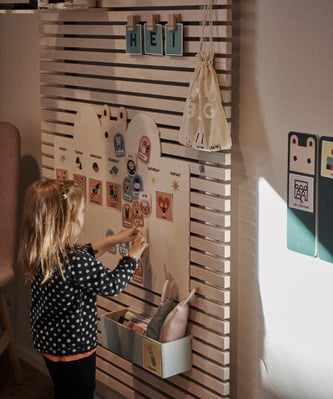6 Ways to Effectively Implement Routines with Your Children

Routines are helpful for any person, no matter what their age. However, for children, it is especially important to establish and maintain routines. it gives them a sense of security and comfort, and it can also help them feel a sense of independence because they can anticipate what's coming next.

Although it sometimes feels like we have very little control right now, children have even less control over their lives than adults do. Decisions are usually made for them, and because they often do not have a concrete concept of time, they order their days by the events that occur. By having predictable routines and schedules, they feel safe and are therefore more inclined to explore their surroundings, actively participate and thrive because their well-being is ensured. Indeed, studies have shown that consistent routines are linked to improved self-regulation skills, better sleep, and better social-emotional health. So how does one implement routines? Well, HEI Schools is here to help! Below are six tips and tricks to help you establish some routines and structure in your home.
1. Set a daily schedule and try to stick to it.
Young children have very little concept of time, but they do know when things change, which is why it is important to consistently schedule events like wake up time, naps, meals, snacks and bedtime at specific times. Children thrive on routines, and even though they may not know it is always 8 am when they wake up, they will feel much different if they wake up at a different time each day.
Of course, it is also very important to be flexible to the needs of both children and caregivers. If someone is having a bad day or an unexpected event occurs, there is room for change. It can also be very useful to have a visual representation of the schedule in a place that your child can see so they can know what’s coming next.
If you need some ideas about what sort of routines to implement, check out our Pinterest page, which includes some free, engaging activities for children!
Activity Idea: Draw pictures of your daily activities with your child, and use them for the daily schedule!
2. Ask children how they would like to transition between activities.
Creating a schedule is the big first step, but then you have to think about how you and your child will move between activities. Transitions tend to be challenging for children, which is why it is important to give them some choices about how they will occur. For example, you can say to your child. “Okay, it will be time for bed soon. Would you like to play for five more minutes or read an extra story before bedtime?” That way, your child feels like they have options, their input is valued and they have some control over what happens next.
Tip: Before each transition, think of two small alternatives that the child can choose from to move to the next activity or event.
3. Give a warning before an activity ends.

When an activity ends unexpectedly, children may be more inclined to get upset or frustrated, especially if they were enjoying the previous activity or not looking forward to the next one. A warning gives your child time to finish what they’re doing and prepare themselves for what’s next.
Tip: Here are a few options you can use for a warning.
-
A verbal cue. For example, you can say, “In five minutes, we’re going to start getting ready for dinner.”
-
An agreed-upon hand signal. When it’s five minutes until dinner, show five fingers to indicate the time left.
-
An egg timer. When five minutes are left, set the timer and put it in a visible place for your child to see.
4. Make transitions fun!
Moving between activities, though challenging, should not feel painful. You can incorporate fun little movements or songs to make the transition enjoyable for you and your child. For example, when playtime is over and you’re moving on to lunchtime, you and your child can sing the song, “Clean up” or if you’re coming inside, suggest a fun movement like hopping or skipping to the door.
Tip: Check out some of our fun songs on YouTube!
5. Make sure your child has enough time to transition.
Children often need more time than adults to complete things, which is why it is important to give your child a sufficient amount of time to move from one activity to another. If they feel rushed or stressed, they might get frustrated or angry, and the transition will take even longer. Though it is important to teach your child how to move between activities, it is even more important to be patient and give them assistance when needed. They will feel much better if they do not feel rushed, and the schedule will likely run much more smoothly if you both have a positive frame of mind toward transitions.
Tip: For the first week of routines, note the time it takes your child to move from one activity to another without your prompting. Then, as you get more familiar with your child’s needs, find gentle ways to facilitate their movement.
.png?width=400&name=mom%20and%20kid%20500x600%20(2).png)
6. Give the new routines time to settle in.
Lastly, but perhaps most importantly, give the routines time to (pardon the pun) become routine. Transitioning to a new schedule always takes time for anyone but particularly for young children. However, once they adjust to new routines, certain types of transitions and a new way of life at home, they will almost certainly thrive. Studies have shown that children exhibit better behavior and have smoother transitions with the help of consistent routines. To give you some context, one study showed that it took about three weeks for toddlers to adjust to a new schedule in a small preschool setting.
Of course, results can vary with the setting, and implementing these changes will not lead to a productive household overnight. With time, however, consistent routines will give everyone some predictability and in the midst of such uncertain times, that is just what everyone needs.
Early Education Products for Every Day
If you’re a teacher or school owner looking for support with school routines, consider the HEI Schools Toolkit. This comprehensive online subscription service includes daily, weekly and monthly routines with accompanying teacher resources and so much more. Watch our webinar to learn more about what we offer!





